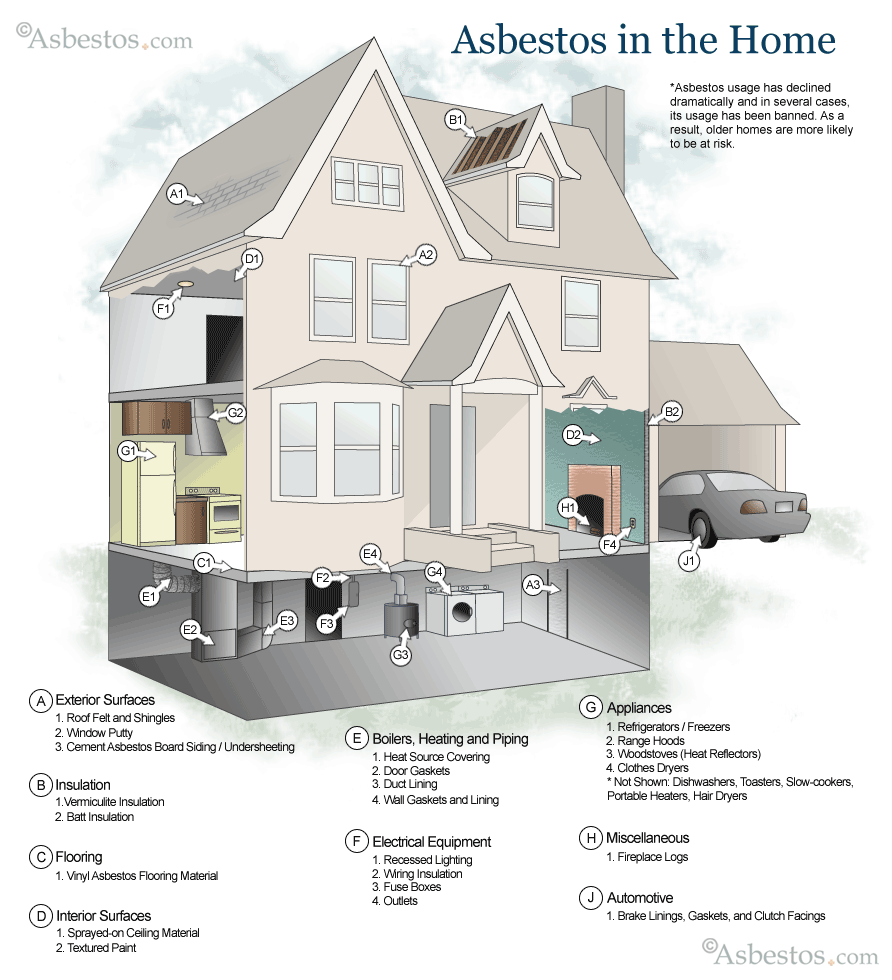The path to home ownership will bring many happy and memorable moments to individuals and families. Potential North Carolina home owners or those remodeling older homes should be aware that homes built before 1980 may still contain asbestos. Asbestos exposure can cause health concerns but it must be known, that not all exposure leads to a related illness. With proper preparation and cautions, you can easily assure your home is asbestos free.
When asbestos materials become broken down or friable, this is when it becomes a concern, as fibers can become airborne and presents a high risk for anyone in the area. The inhalation of its fibers can cause a severe form of asbestos lung cancer known as pleural mesothelioma, a form of asbestos cancer that accounts for three percent of all cancer diagnoses in the United States alone. Due to the fact many mesothelioma symptoms are similar to less serious ailments, Diagnosis of mesothelioma is one of the more difficult tasks physicians encounter.
If any suspected asbestos is present, the best advice is to leave it alone, as this can break down its fibers to move airborne. Hiring a professional inspector who can determine the validity of danger is a good first step. Sometimes, the best option is no action at all. However, if removal is needed in homes, work places and public facilities, it must be performed by a licensed abatement contractor who is trained in handling toxic materials.
North Carolina’s Asbestos Hazard Management Program provides detailed information to citizens, schools and public facilities about the health hazards of asbestos. The organization also accredits individuals who perform asbestos abatement and removal projects.
Once the removal process is completed, green insulation alternatives should be given serious consideration. These alternatives include: cellulose, cotton fiber and lcynene. The United Nations Environmental Program states that the use of recycled building materials such as cotton fiber insulation can reduce energy use by 25 percent annually. The numbers continue to improve as more eco-friendly options become available. With a lackluster economy, these kinds of figures have attracted those who were unaware of eco-friendly construction.

